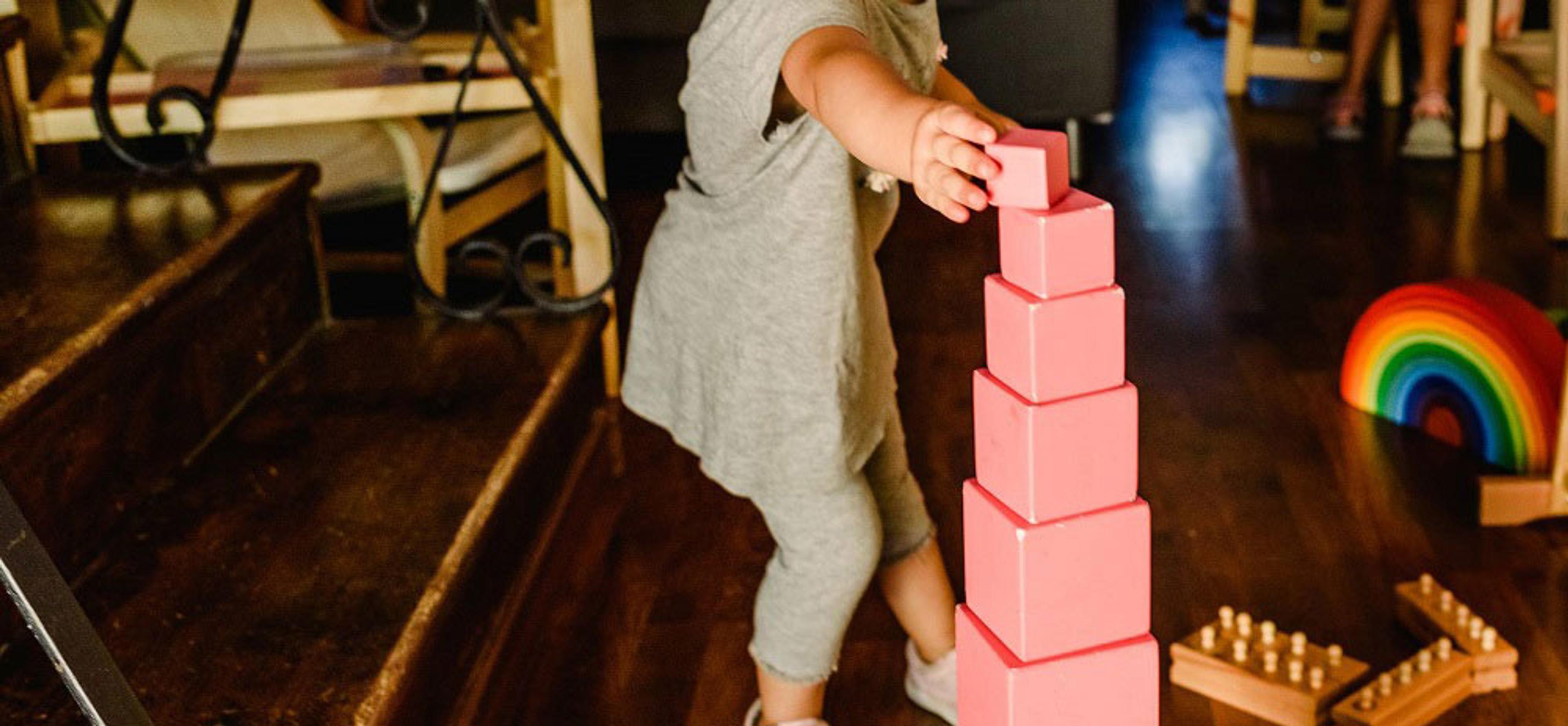In the Montessori classroom, the Pink Tower is a well-known sensorial activity that teaches children about discriminating dimensions.
Overview of Pink Tower activity
This activity consists of ten pink wooden cubes of varying sizes, from the smallest cube of 1 cm³ to the largest cube of 10 cm³. The Pink Tower helps children to develop their visual and tactile senses, as well as their ability to differentiate between sizes and dimensions.
The Pink Tower activity is designed to be an enjoyable and stimulating experience for young children. The cubes are made of high-quality wood and are painted a distinct shade of pink to catch the children's attention. The teacher typically demonstrates how to build the tower by stacking the cubes in descending order of size, from the largest cube at the bottom to the smallest cube at the top. Children are then encouraged to practise building the tower on their own.
Benefits of Pink Tower Activity
- Development of visual and tactile senses: Children can touch and feel the various sizes of the cubes, which enables them to distinguish between them based on their dimensions. This activity encourages children to use their senses and provides them with an opportunity to explore the world around them.
- Promotion of discriminating dimensions: Helps children to develop their ability to discriminate between sizes and dimensions. Children learn to observe and compare the different sizes of the cubes, which helps them to develop their spatial reasoning skills. As they build the tower, they become more adept at discriminating between the different sizes of the cubes, and this skill can be transferred to other areas of their lives.
- Opportunity for fine motor skill development: Helps children to develop their fine motor skills. Children need to be precise and careful when building the tower, as any sudden movements or mistakes can cause the cubes to topple over. This activity encourages children to practise their hand-eye coordination and dexterity, and it can help them develop their manual skills.

Steps to demonstrate the Pink Tower activity to the child
- Preparation: Ensure that the Pink Tower materials are clean and in good condition.
- Presentation: Introduce the activity, emphasising the need to stack the cubes in order.
- Demonstration: Build the tower in front of the child, showing how each cube fits on top of the one below it.
- Practice: Allow the child to practise building the tower independently, with guidance as needed.
- Reinforcement: Encourage regular repetition and refinement of the activity to support development.
In conclusion, the Pink Tower activity is a valuable addition to any Montessori classroom. It provides children with an opportunity to develop their visual and tactile senses, as well as their ability to discriminate between sizes and dimensions. By practising the Pink Tower activity, children can develop their fine motor skills and improve their spatial reasoning abilities. The Pink Tower is just one example of the many sensorial activities that Montessori educators use to promote children's development and learning.

